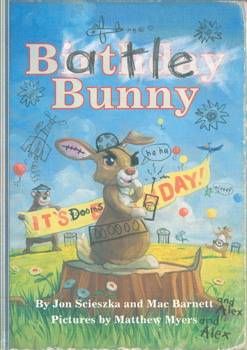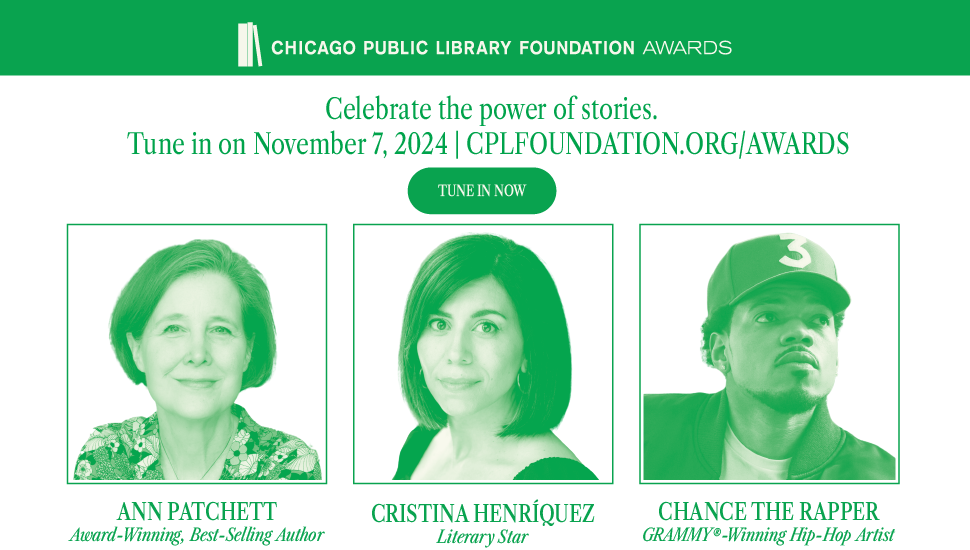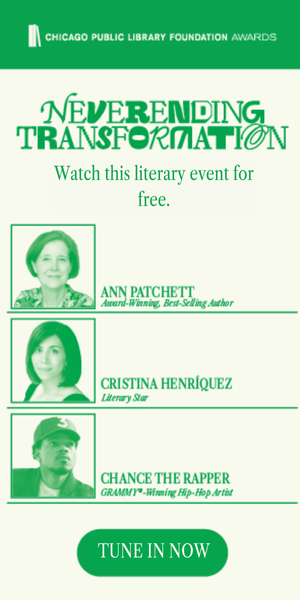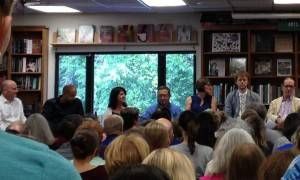
Not all Bunnies and Birthday Cake: Experts on the State of Picture Books
The national news may not have picked this up, but there was an important story out of DC last weekend. Gathering in our nation’s capitol, a panel of experts declared that the picture book is in fact alive and well.
The panel was held at Politics & Prose (DC’s preeminent independent bookseller) and featured some of the heaviest hitters in the industry: leading children’s literature scholar Leonard Marcus, editor Neal Porter, authors Jon Scieszka, Meg Medina, and Mac Barnett and author/illustrators Christopher Myers and Laura Vaccaro Seeger.
Now, if you expect a picture book panel to be all fluffy bunnies and birthday cake, then you would have been terribly disappointed. However, if you’re looking for an erudite discussion about the future of picture books with topics ranging from David Foster Wallace to nipples, then my dear friend you came to the right place.
Seated before a full house on a sunny Sunday afternoon, the panelists wasted no time taking a deep dive into the key issues of their field. For those who don’t have the good fortune of living near Politics & Prose, here are some highlights from the sprawling 90-minute conversation.
(Disclaimer: all quotes should be considered paraphrasing because while I did take notes, my handwriting makes chickenscratch look like Lucida Calligraphy.)
- The Price We Pay: Does the high price point of picture books limit access for economically challenged populations? “We are pricing kids out of great stories,” Barnett lamented. He and Scieszka pointed to literacy programs that betray their cause by distributing low-quality books (often cheap movie tie-ins) posing as literature. Scieszka, the first ever National Ambassador for Young People’s Literature, made the simple but important point that “the way to get kids to be readers is to give them something great to read.” And while many of the panelists agreed that the art of bookmaking is thriving, Myers wondered if there is a danger in commodifying books as artistic objects–if we’ve reached a point of no return where books are no longer viewed as essential, but as luxury items. Marcus then provided a counterpoint by bringing out the nerd hammer and declaring the picture book to be actually quite affordable once you’ve “ammortized the cost over a year of reading”.
- Reflections on Race: Medina spoke forcefully about the challenges of writing geared towards a Latino audience, pointing out that “[America] is the only place where we’re Latinos, everywhere else we’re Guatemalans, Mexicans… there’s incredible diversity here and yet we’re all lumped into this one category.” Elaborating on the importance of diverse characters in literature, she described a potentially vicious cycle, because “children like to see themselves reflected in their books and if we want these children to become authors, we first have to fuel the fires that keep them interested in reading.”
- Uptight Americans: Speaking on the global publishing industry, Porter was asked if the international community viewed Americans as uptight. While wary of playing up cultural stereotypes, he said, “My short answer is yes. Everywhere I go people say, ‘Oh you Americans, you are so afraid of the nipple.’”
It was only a matter of time though before the conversation took its inevitable turn to fluffy bunnies and birthday cake—but not how you might expect. Scieszka and Barnett are collaborating on a new book. The concept is that a child receives a book called Birthday Bunny, the most trite, cloying book imaginable (which Scieszka and Barnett wrote by “turning off their brains”).
The kid then takes it upon himself to alter the text and pictures, transforming it into the book he actually wants to read: Battle Bunny.
This is a fun concept that kids can relate to that just happens to feature a complex layering of visual and written language and challenges children to consider (consciously or otherwise) the intricacies and possibilities of narrative. This is both kid’s play and not–and exactly what makes me love the world of picture books.
The field is filled with these incredibly innovative and passionate thinkers who are very serious about their craft, but do not take themselves too seriously. As the panel ended and the crowd dispersed, one thing was abundantly clear: while we may not be able to predict the future of the picture book, we do know that it is in very good hands.
_________________________
Sign up for our newsletter to have the best of Book Riot delivered straight to your inbox every two weeks. No spam. We promise.
To keep up with Book Riot on a daily basis, follow us on Twitter, like us on Facebook, , and subscribe to the Book Riot podcast in iTunes or via RSS. So much bookish goodness–all day, every day.












